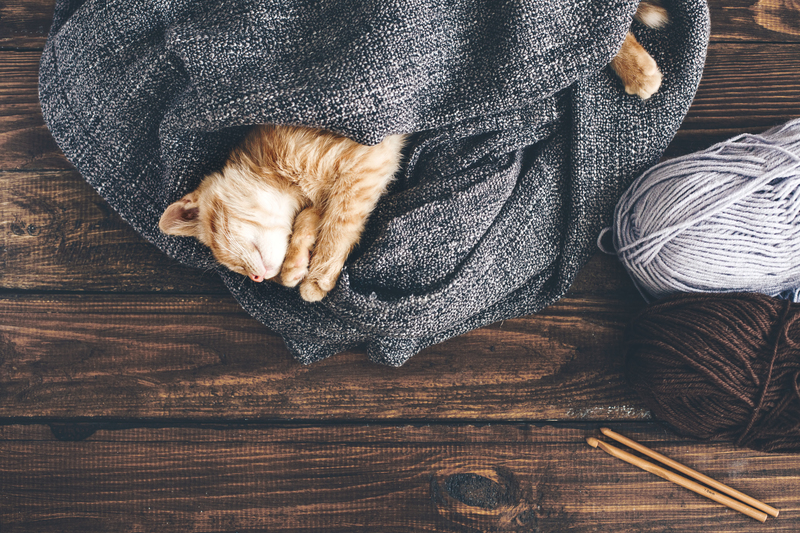Leverage These Strategies for Superior Curtain Cleaning
Posted on 03/09/2025
Leverage These Strategies for Superior Curtain Cleaning
When it comes to maintaining a clean and healthy home, curtain cleaning is often overlooked. Yet, superior curtain cleaning can significantly contribute to improved air quality, aesthetic appeal, and overall hygiene in your living space. In this comprehensive guide, we unveil proven strategies for effective curtain cleaning and share practical tips on how to keep your drapes looking their best. If you're searching for the most effective methods for cleaning curtains like a pro, read on!

Why Prioritize Curtain Cleaning?
Curtains act as filters, trapping dust, pollen, pet dander, and other airborne particles. Over time, they can become a breeding ground for allergens and bacteria, negatively impacting the indoor air quality in your home. Besides hygienic reasons, dirty curtains can fade, smell musty, and decrease the appeal of your room decor.
Regular curtain cleaning not only removes dust and grime but also extends the lifespan of your drapery and contributes to a fresher, healthier home environment. By leveraging the strategies below, you can achieve superior curtain cleanliness using the best techniques available.
Essential Curtain Cleaning Strategies for Outstanding Results
1. Regular Vacuuming for Maintenance
One of the simplest yet most effective ways to keep your curtains clean is with routine vacuuming. This removes surface dust, pollen, pet hair, and other debris before they embed deeply in the fabric.
Follow these actionable steps:- Use a vacuum cleaner with an upholstery attachment.
- Vacuum from top to bottom, focusing on folds and hems where dust accumulates.
- For delicate fabrics, reduce suction or use a soft brush attachment to avoid damage.
Tip: For high-traffic homes or areas prone to dust, aim to vacuum your curtains at least once a week.
2. Identify the Fabric for Safe Cleaning
Before proceeding with any curtain cleaning strategies, always check the fabric care label. Different materials require distinct cleaning approaches.
Common curtain fabrics include:- Cotton and linen: Usually machine-washable but may shrink if not pre-treated.
- Velvet or silk: Often require professional or dry cleaning to protect texture and color.
- Synthetics: Polyester curtains tend to be more durable and easier to clean at home.
Ignoring the recommended cleaning method can result in color fading, fabric shrinkage, or even permanent damage to your draperies. Always leverage superior curtain cleaning techniques suited for the material.
3. Deep-Cleaning: Machine Washing Techniques
If your curtains are machine-washable, this is among the most efficient curtain cleaning methods for a thorough refresh.
Best practices for machine washing curtains:- Remove all hooks, rings, or other hardware before washing.
- Use cold or lukewarm water to prevent shrinkage and fading.
- Opt for a gentle cycle and mild, non-bleaching detergent.
- Air dry naturally (if possible) or use the tumble dryer on a low setting.
- Iron curtains on a low heat, if required, to restore their crisp appearance.
Pro tip: Regularly deep-cleaning your curtains helps eliminate persistent odors and ingrained stains, ensuring long-lasting freshness.
4. Steam Cleaning as an Efficient Alternative
For those who prefer not to take down their curtains, steam cleaning offers an efficient solution for both refreshing and sanitizing the fabric.
Benefits of steam cleaning:- Effectively kills bacteria, dust mites, and allergens trapped in the fibers.
- Removes light stains, odors, and creases with minimal effort.
- Safe for most fabrics, especially heavy or lined curtains.
Simply pass a garment steamer down the length of the curtain, holding it a safe distance from the surface. This method is ideal for superior curtain cleaning without removal.
5. Spot-Cleaning Stains Quickly
Dealing with stains promptly is crucial for maintaining pristine curtain fabric. Whether it's food splatters, pet messes, or water spots, immediate attention prevents permanent marks.
Steps for effective spot-cleaning:- Blot (don't rub) excess liquid with a clean, dry cloth.
- Apply a mild cleaning solution (water with a drop of gentle detergent) to the spot.
- Test on an inconspicuous area first to check for discoloration.
- Pat the area gently and allow it to air dry completely.
Insider strategy: Keep a fabric-safe stain remover on hand for quick action and superior results.
Advanced Curtain Cleaning Methods for Stubborn Dirt & Odors
6. Dry Cleaning for Delicate and Heavily Soiled Curtains
Professional dry cleaning is recommended for silk, velvet, wool, or interlined curtains and for those that are heavily soiled or have not been cleaned in a long time.
- Maintains fabric integrity and prevents shrinkage.
- Ensures color vibrancy, texture, and finish.
- Effectively removes deep-seated odors and tough stains.
When in doubt, always err on the side of caution and opt for dry cleaning. Remember, preserving the quality of your curtains is key for an elegant, long-lasting look.
7. Deodorizing Curtains for Lasting Freshness
Odors can linger in curtain fabrics, especially in kitchens or homes with pets and smokers. Superior curtain deodorizing strategies include:
- Sprinkle baking soda on the curtains, let sit for 30 minutes, then vacuum off.
- Mist curtains with a light fabric-safe spray (such as diluted white vinegar or vodka), which neutralizes odors as it dries.
- Air out curtains regularly by opening windows or briefly hanging them outdoors.
Maintaining freshness between deep cleans is one of the hallmarks of superior curtain hygiene.
8. Allergen Reduction & Hypoallergenic Cleaning
If allergies are a concern in your household, it's essential to leverage best practices for curtain cleaning that specifically target dust mites and allergens.
- Wash curtains at a high temperature (as permitted by the care label) to kill mites and bacteria.
- Opt for hypoallergenic detergents and avoid strong fragrances.
- Ensure curtains are fully dry before rehanging to prevent mold and mildew growth.
This strategy works best in bedrooms, nurseries, or any space that requires a healthier and safer environment.
Expert Tips for Superior Curtain Cleaning Results
9. Timing and Seasonal Cleaning
For optimum integrity and appearance, schedule curtain cleaning according to use and exposure:
- Lightweight, sheer curtains: Every 3-4 months
- Thick, heavy draperies: Every 6-12 months
- Rooms with high exposure to pollutants or direct sunlight: More frequent checks and cleaning
Align deep cleans seasonally, especially during spring cleaning or after high pollen/humidity periods.
10. Preventative Maintenance for Long-Lasting Curtains
To extend the time between deep cleans and preserve your drapery's vibrancy:
- Draw curtains daily to prevent dust buildup in folds.
- Keep windows closed during high pollen days.
- Use a portable air purifier to reduce airborne contaminants in the room.
- Rotate or change out curtains seasonally if possible.
11. Ironing and Finishing Touches
After any wash or steam clean, ironing your curtains can create a crisp, sophisticated finish. Always iron on the reverse side and adjust the heat according to the fabric.
Bonus tip: Hang curtains while slightly damp to let gravity naturally reduce wrinkles.
12. Choosing Professional Curtain Cleaning Services
For intricate drapery, oversized curtains, or when in doubt about the right process, hiring a professional curtain cleaning service is a wise investment.
- Expertise in assessing and treating various textiles
- Access to advanced cleaning and deodourising technologies
- Convenience and time saving for busy homeowners
Professional cleaners offer on-site steam cleaning, pick-up/laundry/delivery, and care for specialty fabrics--ensuring an unmatched level of curtain cleanliness.
Frequently Asked Questions about Superior Curtain Cleaning
How often should I clean my curtains?
Curtains should be deep-cleaned every 3-6 months, with lighter maintenance (e.g., vacuuming) performed weekly or bi-weekly. Homes with allergies, pets, or smokers may require more frequent cleaning.
Can I wash blackout or lined curtains at home?
Always check the care label. Some blackout linings and interlined curtains require dry cleaning or special care to prevent damage to their UV protective coatings or fabric layers.
Is it safe to use bleach on curtains?
Generally, bleach should be avoided except on pure white, color-fast cotton curtains. Always perform a patch test first and opt for non-chlorine bleach where possible.
Do I need to remove curtain hooks and rings before cleaning?
Yes! All hardware should be taken off to prevent damage to both the objects and the curtain fabric.

Conclusion
Superior curtain cleaning isn't just about aesthetics--it's about maintaining a clean, healthy, and inviting home. By leveraging the right curtain cleaning strategies, from routine vacuuming and spot cleaning to expert deep cleaning and allergen reduction, you'll ensure your drapes look spectacular and perform optimally for years to come.
If you're seeking to refresh your living space, don't underestimate the power of ultra-clean curtains. Use these strategies, and your home will feel brighter, cleaner, and more stylish than ever!
Need Help with Superior Curtain Cleaning?
If you're searching for the best curtain cleaning services or want to learn more cleaning tips for other household textiles, contact our expert team or browse our blog for more targeted advice on achieving a cleaner, healthier home environment.




